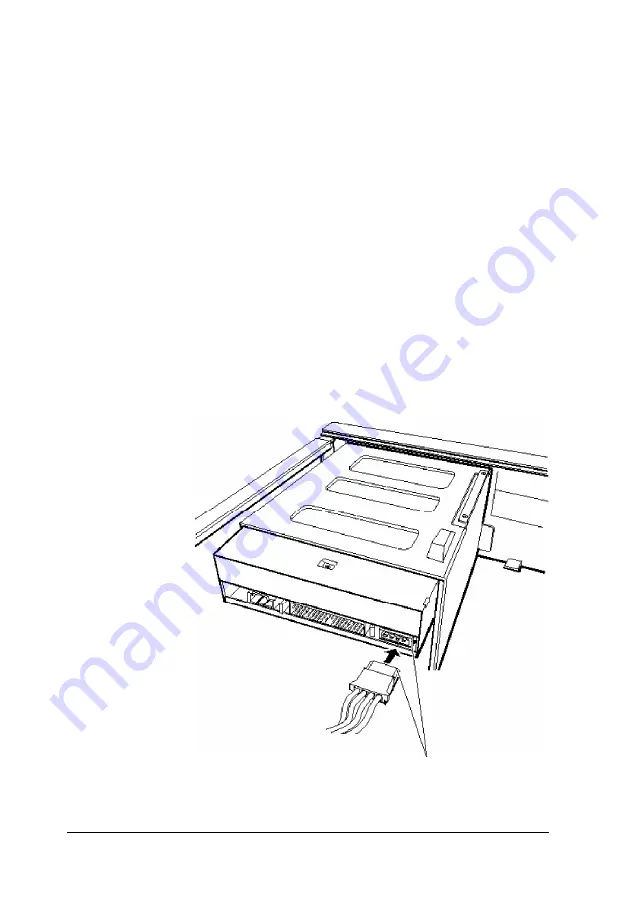
4.
Make sure the holes in the cable connector fit over all the
pins; then push in the connector.
C a u t i o n
If you do not correctly align the holes with the pins, you
could severely damage your drive when you push in the
connector.
5.
Locate one of the power supply cables that lead from the
power supply. (They have multi-colored wires and a plastic
connector on the end.)
6.
Align the notched corners of the power supply cable
connector with the notched corners of the drive’s power
connector (such as the one shown below). Make sure the
holes fit over all the pins and then push in the connector.
notched corners
5-18
Installing and Removing Drives in the Slimline Computer
Summary of Contents for ActionTower 8000
Page 1: ......
Page 28: ...1 10 Setting Up Your System ...
Page 71: ...Installing and Removing Options 4 7 ...
Page 167: ...Hardware Interrupts System l O Address Map A 12 Specifications ...
















































